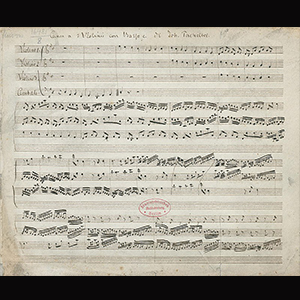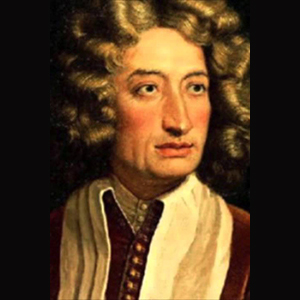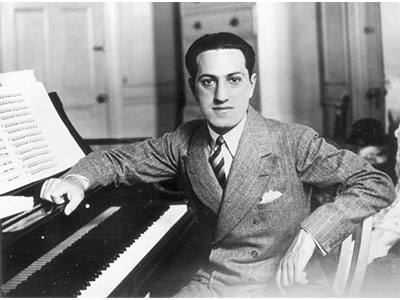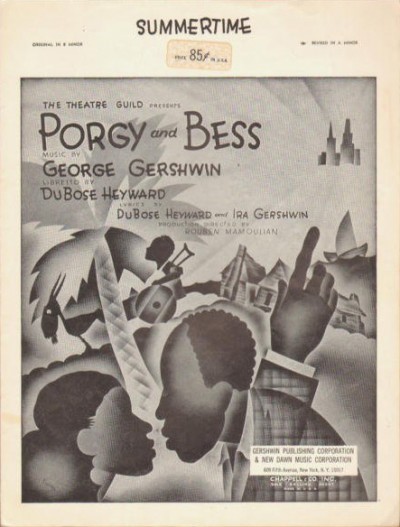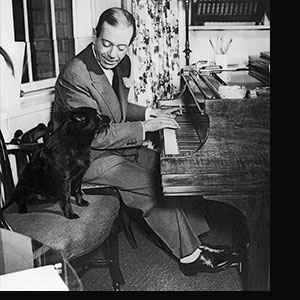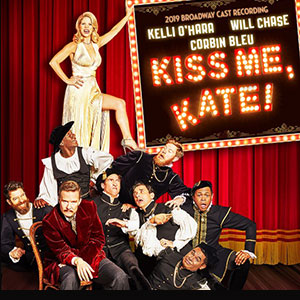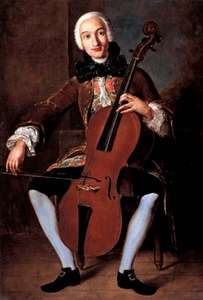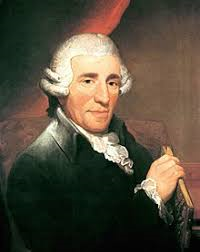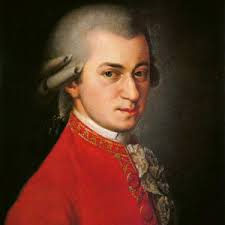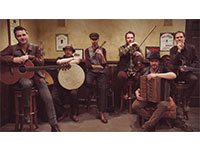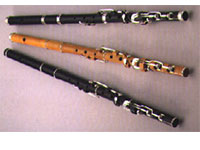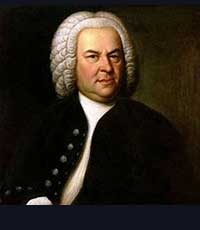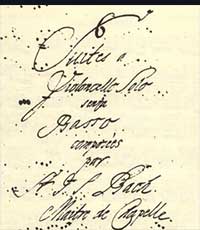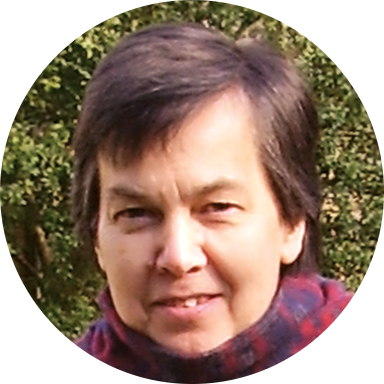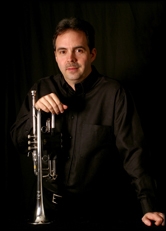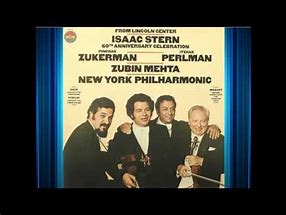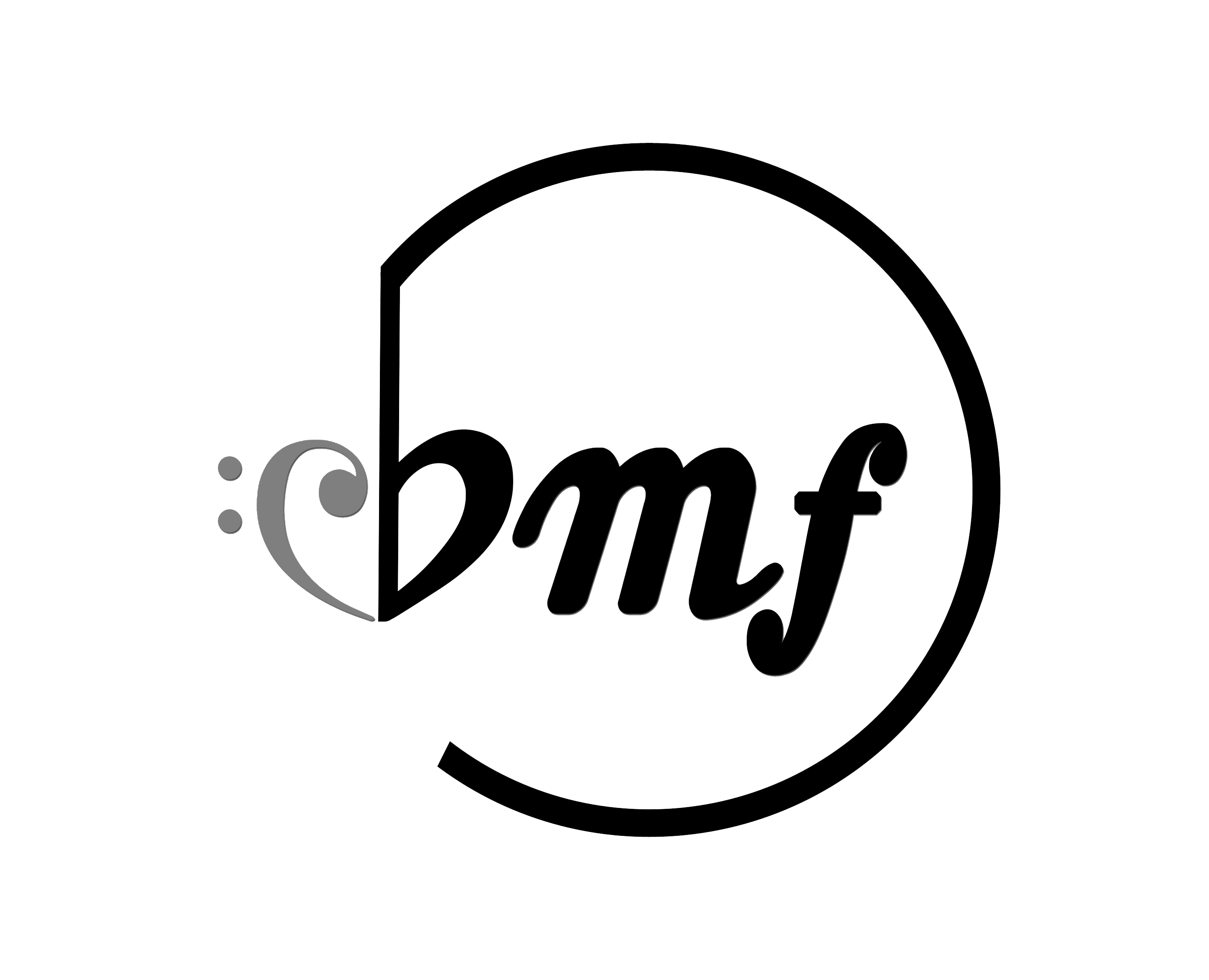Summer Festival 2019
Orchestral Music
Excerpt from Encyclopedia Britannica written by Betsy Schwarm:
Pachelbel’s Canon is a musical work for three violins and ground bass (basso continuo) by German composer Johann Pachelbel, admired for its serene yet joyful character. It is Pachelbel’s best-known composition and one of the most widely performed pieces of Baroque music. Although it was composed about 1680–90, the piece was not published until the early 20th century.
Pachelbel’s Canon uses a musical form—the canon—that is similar to that of the French folk song “Frère Jacques” though more complicated in design. The piece begins with one melody in the ground bass—typically performed by a cello and a harpsichord or organ. That melody is then repeated in different registers and instrumental parts while other melodies are added, usually in the upper registers. In an intricate canon such as Pachelbel’s, the basic melody gradually grows and evolves, becoming more and more elaborate each time it returns. The work’s accompanying gigue, a lively Baroque dance, was created in the same key and intended to be played immediately after the canon, but it is largely forgotten today.
Pachelbel’s Canon was relatively obscure until the late 20th century, when it experienced a surge in popularity. It was included in numerous television and film sound tracks—notably that of the 1980 film Ordinary People—and became a standard in general collections of classical music. It also became a common feature of wedding celebrations, especially in the United States. By the 21st century Pachelbel’s Canon had been transcribed for a full array of instruments, both acoustic and electronic, and it was rarely heard performed by the instruments for which it was originally written.
More Info ListenFrom article written by David Guion
Is it even conceivable that any series of outdoor orchestra or concert band concerts (at least in the US) has never presented someone singing “Summertime”? If a series has lasted more than five or ten years, its audiences have probably heard it sung multiple times—not to mention instrumental arrangements on those or a wide variety of other concerts.
It’s one of George Gershwin’s best-loved works, and certainly his most recorded. Some people regard Gershwin as America’s greatest composer. Too many professional critics dismiss him, looking askance at the fact that he devoted most of his energy to (shudder) popular music.
Gershwin wrote music for many very successful musical comedies. The songs survive, but no one would think of reviving the shows. He wrote only one opera, Porgy and Bess. It basically flopped at first.
One night Gershwin read Dubose Heyward’s best-selling novel, Porgy, hoping for a cure for insomnia. I can’t document whether he got to sleep that night, but he soon asked Heyward to help him turn the book into an opera. Heyward wrote most of the lyrics and George Gershwin wrote music to fit them. Ira Gershwin, George's brother, wrote a few songs as well.
George Gershwin visited Heyward in Charleston, South Carolina, the novel’s and opera’s setting. He not only soaked up their music and speech patterns, but also participated. Heyward marveled that Gershwin was probably the only white man of the time who could shout, clap, and stomp along with the most exuberant black music-making without missing a beat.
Gershwin’s insistence on an all-black cast made fund-raising difficult. It also contributed to the disappointingly short run of the opera. Further, the songs sounded like they belonged in one of Gershwin’s characteristic comedies, but the actual story was dark and violent. And no one was prepared to hear sung recitative instead of spoken dialog.
The production lost money, but as frequently happens when good music faces initial failure, success followed soon enough.
"SUMMERTIME" on stage
“Summertime” is the first vocal piece. It makes an immediate contrast to the energetic blues dance played on piano as an instrumental introduction. Clara, not one of the major characters, sings it as a lullaby to her baby.
Like any of his Tin Pan Alley contemporaries, Gershwin could write chromatic melodies and harmonies when he wanted to, but this song uses only six different notes a natural A minor scale, without the note “F.” The rhythm is likewise simple. The occasional syncopation adds no particular excitement or rhythmic drive.
Article written by David Guion:
The song of that name by Cole Porter appears in his great musical Kiss Me Kate, a play within a play in which a divorced couple, who still secretly love each other despite their constant quarreling, star in a production of Shakespeare’s The Taming of the Shrew. Shakespeare’s bawdiness provided Porter with the license to introduce “It’s Too Darn Hot” and other risque songs into what turned out to be his first hit in three years.
More Info ListenViva La Vida
by Coldplay
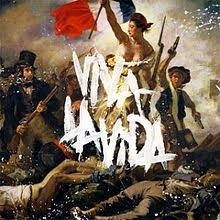
"I used to rule the world
Seas would rise when I gave the word
Now in the morning I sleep alone
Sweep the streets I used to own"
From Wikipedia, the Free Encyclopedia
Coldplay are a British rock band formed in London in 1996.The four members – lead vocalist/pianist Chris Martin, lead guitarist Jonny Buckland, bassist Guy Berryman and drummer Will Champion – were at University College London and came together from 1996 to 1998, during which time the band changed names from Pectoralz, to Starfish, then Coldplay.Creative director and former manager Phil Harvey is often referred to as the fifth member by the band.[4] They recorded and released two EPs: Safety in 1998 and The Blue Room in 1999. The latter was their first release on a major label, after signing to Parlophone.
Coldplay achieved worldwide fame with the release of the song "Yellow" in 2000, followed in the same year by their debut album Parachutes, which was nominated for the Mercury Prize. Their fourth studio album, Viva la Vida or Death and All His Friends (2008), the best-selling album worldwide of 2008, was produced by Brian Eno and released to largely positive reviews, earning three Grammy Awards.
Meaning of "Viva la Vida"
Frontman Chris Martin told Rolling Stone that he christened this song and the album "Viva la Vida" - meaning "long live life" or more literally, "the life lives" - after he saw the phrase on a painting by Mexican artist Frida Kahlo.
More Info Listen Listen ArrangementChamber Music
From Wikipedia, the Free Encyclopedia
Luigi Boccherini (February 19, 1743 – May 28, 1805) was an Italian composer and cellist of the Classical era whose music retained a courtly and "galante" style even while he matured somewhat apart from the major European musical centers. He is best known for a minuet from his String Quintet in E, Op. 11, No. 5 (G 275), and the Cello Concerto in B flat major (G 482). The latter work was long known in the heavily altered version by German cellist and prolific arranger Friedrich Grützmacher, but has recently been restored to its original version.
Boccherini also composed several guitar quintets, including the "Fandango", which was influenced by Spanish music. His biographer Elisabeth Le Guin noted among Boccherini's musical qualities "an astonishing repetitiveness, an affection for extended passages with fascinating textures but virtually no melodic line, an obsession with soft dynamics, a unique ear for sonority, and an unusually rich palette of introverted and mournful affects." Many of his other biographers and admirers see his music quite differently and in a much more appreciated light.
More Info ListenFrom Wikipedia, the Free Encyclopedia
The Four Seasons (Italian: Le quattro stagioni) is a group of four violin concerti by Italian composer Antonio Vivaldi, each of which gives musical expression to a season of the year. They were written around 1716–1717 and were published in 1725 in Amsterdam, together with eight additional concerti, as Il cimento dell'armonia e dell'inventione ("The Contest Between Harmony and Invention").
The Four Seasons is the best known of Vivaldi's works. Though three of the concerti are wholly original, the first, "Spring", borrows motifs from a Sinfonia in the first act of Vivaldi's contemporaneous opera Il Giustino. The inspiration for the concertos is not the countryside around Mantua, as initially supposed, where Vivaldi was living at the time, since according to Karl Heller they could have been written as early as 1716–1717, while Vivaldi was engaged with the court of Mantua only in 1718. They were a revolution in musical conception: in them Vivaldi represented flowing creeks, singing birds (of different species, each specifically characterized), a shepherd and his barking dog, buzzing flies, storms, drunken dancers, hunting parties from both the hunters' and the prey's point of view, frozen landscapes, and warm winter fires.
Unusually for the period, Vivaldi published the concerti with accompanying sonnets (possibly written by the composer himself) that elucidated what it was in the spirit of each season that his music was intended to evoke. The concerti therefore stand as one of the earliest and most detailed examples of what would come to be called program music—i.e., music with a narrative element. Vivaldi took great pains to relate his music to the texts of the poems, translating the poetic lines themselves directly into the music on the page. For example, in the middle section of the Spring concerto, where the goatherd sleeps, his barking dog can be heard in the viola section. The music is elsewhere similarly evocative of other natural sounds. Vivaldi separated each concerto into three movements (fast–slow–fast), and, likewise, each linked sonnet into three sections.
Summer, 3rd movement Presto:
Alas, his fears were justified
The Heavens thunder and roar and with hail
Cut the head off the wheat and damages the grain.
by Michael Jameson
In his London notebook entry for the date November 14, 1794, Haydn wrote: "I went with Lord Abingdon to Preston, 2 6 miles from London, to visit the Baron of Aston -- he and his wife both love music...." It was for this visit that the composer took with him as a hostess present several divertimentos for the uncommon instrumental grouping of two flutes and cello. Two of these works were published in January 1799, by Earl Abingdon's friend Teobaldo Monzani, an accomplished flute-player, who also had interests in the publishing business. The complete set of four trios are known collectively as Haydn's London Trios. Haydn must have been well aware of the flute's growing popularity in England, since it had become the most fashionable amateur instrument, second only to the harpsichord.
Although only three voices are employed, Haydn still manages to create a harmonic severity and canonic interest normally expected in much more complex music. Like so many of Haydn's lighter pieces, however, the London Trios quickly fell out of vogue, and were not reintroduced to the chamber literature until 1909. Robbins Landon states by 1971, San Francisco buskers had them in their repertories, and that they "got the biggest audiences and made the most money." Robbins Landon adds, this was "a purpose for which Haydn certainly did not intend his London Trios, but which illustrates how music of this charm, vitality, and technical mastery will survive despite the works' temporary eclipse in the nineteenth century."
More Info Listenby John Palmer
Mozart first used the basset horn in the Serenade for Winds, K. 361/370a, composed in the spring of 1781. Shortly afterward, he employed the instrument in his first Vienna opera, Die Entführung aus dem Serail. He also used the basset horn to symbolize sadness in the Masonic Funeral Music, K. 477/479a. The basset horn is much like an alto clarinet, but with a smaller bore, producing a different color. It is also slightly "whiney" in comparison to B flat or A clarinets. One of the champions of the basset horn in Mozart's time was Anton Paul Stadler (1753-1812), clarinetist and great friend of the composer. For Stadler, Mozart wrote the Clarinet Quintet, K. 581, in September 1789 and the Clarinet Concerto, K. 622, in October 1791.
It is very likely that Stadler, accompanied by two other players, read through Mozarts Divertimentos, K. Anh. 229, for their own amusement at Mozart's home. During these evening sessions, the musicians tried different instruments, evidently deciding on the three basset horns as the best instrumentation. Mozart's willingness to experiment with timbre justifies the editions of the five divertimentos in a setting for two basset horns or clarinets with bassoon.
More info ListenConcerto for 4 Cellos in G Major TWV40:202 (transcription by Lynne Latham)
by Georg Philipp Telemann
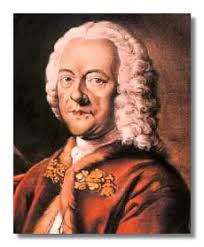
by Walter G. Bergmann
Georg Philipp Telemann, (born March 14, 1681, Magdeburg, Brandenburg [Germany]—died June 25, 1767, Hamburg), German composer of the late Baroque period, who wrote both sacred and secular music but was most admired for his church compositions, which ranged from small cantatas to large-scale works for soloists, chorus, and orchestra.
A master of the principal styles of his time—German, Italian, and French—he could write with ease and fluency in any of them and often absorbed influences of Polish and English music. He composed equally as well for the church as for opera and concerts. His music was natural in melody, bold in harmonies, buoyant in rhythm, and beautifully orchestrated. Profound or witty, serious or light, it never lacked quality or variety.
More Info ListenOriginal Version: Concerto for 4 solo violins in D Major TWV40:202
Listen The history and origins of traditional Irish music
by Frances Mulraney
Ireland may produce big names such as U2 and the Script that tour popular music all over the world but we also know how to keep in touch with our traditions. Fleadh Cheoil na hÉireann (the Music Festival of Ireland), the world’s biggest traditional Irish music celebration, still sees over 400,000 attendees each year with dozens of nationalities arriving in Ireland to celebrate our 2,000 year old traditions.
Irish traditional music began as an oral tradition, passed on from generation to generation by listening, learning by ear and without formally writing the tunes on paper. This is a practice that is still encouraged today and students of traditional music are encouraged to pick up tunes they hear from others or to learn as they listen. Many formal classes will provide music notes for students and books do print tunes on a traditional music stave, however.
The main traditional instruments are the fiddle, Irish flute, tin whistle, celtic harp, uilleann pipes and bodhrán. Traditional Irish music is highly ornamented by the individual and it would be hard to meet two players who play the same tune the same way.
More info ListenFrom Wikipedia:
The six Cello Suites, BWV 1007-1012, are suites for unaccompanied cello by Johann Sebastian Bach. They are some of the most frequently performed and recognizable solo compositions ever written for cello. Bach most likely composed them during the period 1717–23, when he served as Kapellmeister in Köthen. The title given on the cover of the Anna Magdalena Bach manuscript was Suites à Violoncello Solo senza Basso (Suites for cello solo without bass).
These suites for unaccompanied cello are remarkable in that they achieve the effect of implied three- to four-voice contrapuntal and polyphonic music in a single musical line. As usual in a Baroque musical suite, after the prelude which begins each suite, all the other movements are based around baroque dance types; the cello suites are structured in six movements each: prelude, allemande, courante, sarabande, two minuets or two bourrées or two gavottes, and a final gigue. The Bach cello suites are considered to be among the most profound of all classical music works.Wilfrid Mellers described them in 1980 as "Monophonic music wherein a man has created a dance of God."
More Info ListenHelen Butterworth was born in Derbyshire, England, and received her professional musical education, obtaining teaching and performance degrees, at the Royal College of Music, London. She is now an ESA trained Suzuki violin teacher, oboist, pianist, composer and conductor with over 25 years experience. Helen teaches for the London Suzuki Group and is director of the South Croydon Suzuki Group, teaching individual and group lessons each week. She is regularly invited to teach, conduct and accompany at Suzuki workshops in England, and is recognised as an expert in enrichment and group repertoire for younger players. Her music has been performed all over the world.
More info ListenThe musical material for Sound Reflections was inspired after a trip to the Grand Canyon. The open voicings of quartal harmonies reflect the canyon's vast expanse. This work is fun to perform and enjoyable to hear, and is ideal for competitions, conference preludes and engaging concert programs.
More Info ListenDescription by Andrew Lindemann Malone

